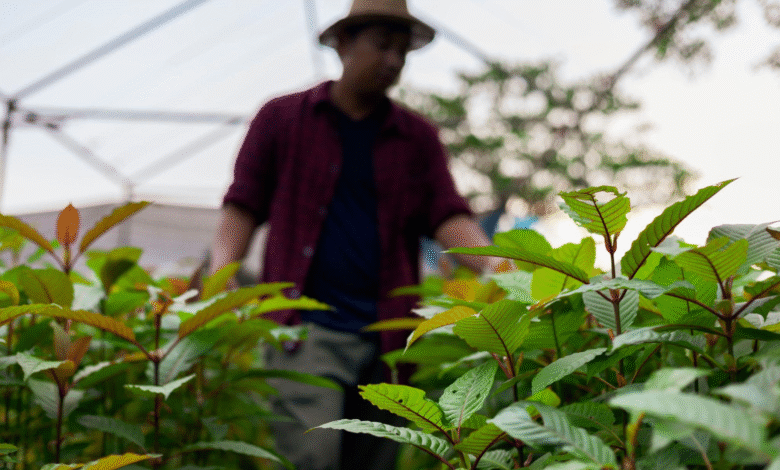How to Evaluate Quality Standards When Purchasing Botanical Products

In today’s expanding botanical market, quality assessment has become increasingly important for discerning consumers. Whether you’re exploring options at a Canadian kratom shop or considering other botanical products, understanding how to evaluate quality can significantly impact your experience. This comprehensive guide examines the key factors that distinguish premium botanical products from substandard alternatives.
Understanding Source Transparency
One of the most reliable indicators of quality in botanical products is comprehensive source transparency. This goes beyond simply stating a country of origin and should ideally include:
Specific Growing Region Information
Premium botanical suppliers typically provide detailed information about the specific regions where their plants are grown. This transparency matters because environmental factors like soil composition, altitude, climate, and rainfall patterns directly influence a plant’s development and chemical composition.
Just as wine connoisseurs value terroir—the environmental factors affecting grape quality—botanical enthusiasts recognize that growing conditions significantly impact plant characteristics. A supplier committed to quality will readily share this information rather than providing vague or generalized origin claims.
Sustainable Harvesting Practices
Ethical sourcing isn’t just about environmental responsibility—it often correlates directly with product quality. Suppliers who implement sustainable harvesting methods typically demonstrate greater care throughout their entire production process.
Look for indications that a supplier works directly with farmers who use responsible cultivation techniques, selective harvesting methods, and fair labor practices. These approaches tend to produce superior botanicals while supporting the communities where they’re grown.
The Importance of Testing Protocols
Perhaps the most concrete way to assess botanical quality is through comprehensive testing protocols. Premium suppliers invest in rigorous testing to verify both safety and potency.
Contaminant Testing
Quality botanical products should undergo testing for potential contaminants, including:
- Heavy metals (lead, arsenic, cadmium, mercury)
- Pesticide residues
- Microbial contaminants (bacteria, yeast, mold)
- Adulterants and undisclosed additives
These safety tests ensure that the product contains only what it claims to contain, without harmful substances that could pose health risks. Reputable suppliers make these test results readily available upon request or even publish them directly on their websites.
Potency and Composition Analysis
Beyond safety testing, premium botanicals undergo analysis to verify their active compound content. This typically involves laboratory techniques like:
- High-Performance Liquid Chromatography (HPLC)
- Gas Chromatography-Mass Spectrometry (GC-MS)
- Thin-Layer Chromatography (TLC)
These methods can identify and quantify the presence of key compounds, providing objective data about a product’s composition. For consumers seeking consistent experiences, this information proves invaluable in making informed choices.
Evaluating Processing Standards
The journey from harvest to final product involves numerous steps that can either preserve or diminish botanical quality. Understanding these processes helps consumers recognize suppliers committed to excellence.
Harvesting Timing and Methods
Premium botanicals are harvested at optimal times to maximize desired compounds. This often involves selective harvesting rather than bulk collection, with experienced harvesters choosing individual leaves or plants based on specific maturity indicators.
Quality-focused suppliers typically describe their harvesting approach, including information about seasonal considerations and maturity selection criteria. This attention to detail at the earliest stage of production sets the foundation for superior products.
Drying Techniques
After harvest, proper drying becomes critical for preserving botanical integrity. Inferior drying methods can lead to mold growth, degradation of active compounds, or contamination issues. Premium suppliers implement carefully controlled drying protocols that maintain optimal temperature and humidity levels.
Look for information about whether products are dried indoors under controlled conditions or using traditional methods optimized through generations of experience. The absence of any information about drying techniques often indicates less rigorous quality control.
Storage Conditions
Even perfectly harvested and processed botanicals can deteriorate if improperly stored. Quality degradation occurs rapidly when products are exposed to excessive heat, humidity, direct sunlight, or oxygen. Premium suppliers implement proper storage protocols throughout their supply chain, including:
- Climate-controlled storage facilities
- Appropriate packaging materials that protect against light and air exposure
- Inventory management systems that ensure products don’t sit in storage for extended periods
These measures help maintain the botanical’s integrity from production to delivery, ensuring consumers receive products with their beneficial compounds intact.
Packaging Quality Indicators
A product’s packaging often provides valuable clues about overall quality standards. Premium botanicals typically feature:
Protective Packaging Materials
Quality-focused suppliers use packaging specifically designed to protect botanical integrity. This may include resealable mylar bags, ultraviolet-resistant containers, or vacuum-sealed packaging that minimizes oxygen exposure. These materials cost more than basic packaging but demonstrate a commitment to preserving product quality.
Comprehensive Labeling
Transparent labeling reflects a supplier’s confidence in their product and respect for consumer information needs. Look for labels that clearly state:
- Botanical species and variety
- Harvest date or production lot number
- Suggested storage conditions
- Transparent ingredient listings without vague terms like “proprietary blend”
This information empowers consumers to make informed decisions and indicates a supplier with nothing to hide.
Evaluating Company Reputation and Practices
Beyond the product itself, a supplier’s business practices often reflect their commitment to quality.
Customer Education Efforts
Companies dedicated to quality typically invest in educating their customers about their botanicals. This might include detailed product descriptions, blog articles explaining harvesting methods, or information about the traditional and contemporary contexts of the plants they offer.
This educational approach demonstrates expertise and suggests a genuine interest in ensuring customers understand what they’re purchasing rather than simply maximizing sales.
Responsive Customer Service
Premium suppliers generally offer accessible customer support channels where consumers can ask questions about sourcing, testing, or other quality considerations. The willingness to engage with these inquiries—and provide substantive, transparent responses—often indicates a company proud of their quality standards.
Community Engagement
Many quality-focused botanical suppliers actively participate in relevant community forums, industry associations, or advocacy organizations. This engagement reflects a commitment to industry-wide standards and responsible practices beyond their immediate business interests.
Applying Quality Assessment to Your Purchases
When exploring options at a Canadian kratom shop or considering other botanical products, apply these evaluation criteria systematically. While price certainly factors into purchasing decisions, understanding the substantive differences between premium and inferior products helps consumers recognize the value behind higher-quality options.
Remember that quality assessment isn’t about finding perfect products—it’s about making informed choices based on transparency, testing, and traceable standards. By prioritizing these factors, consumers can identify suppliers whose practices align with their expectations for both product quality and business ethics.
As the botanical marketplace continues to evolve, these quality indicators remain reliable guides for discerning consumers seeking exceptional products from responsible suppliers.




